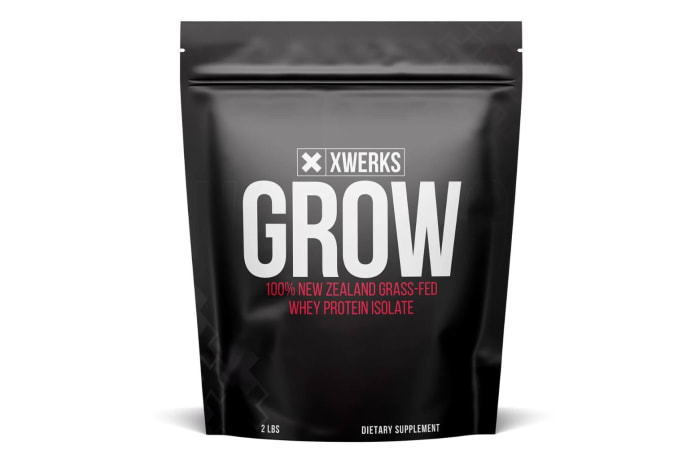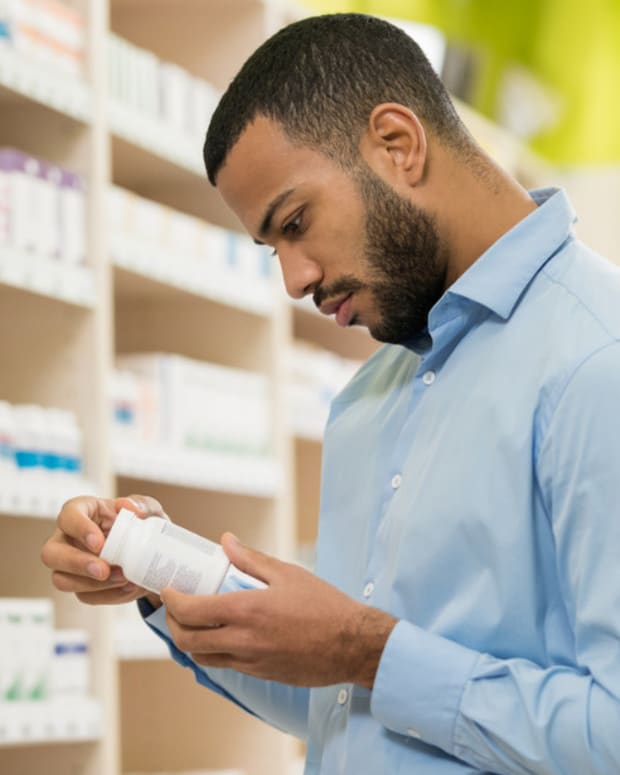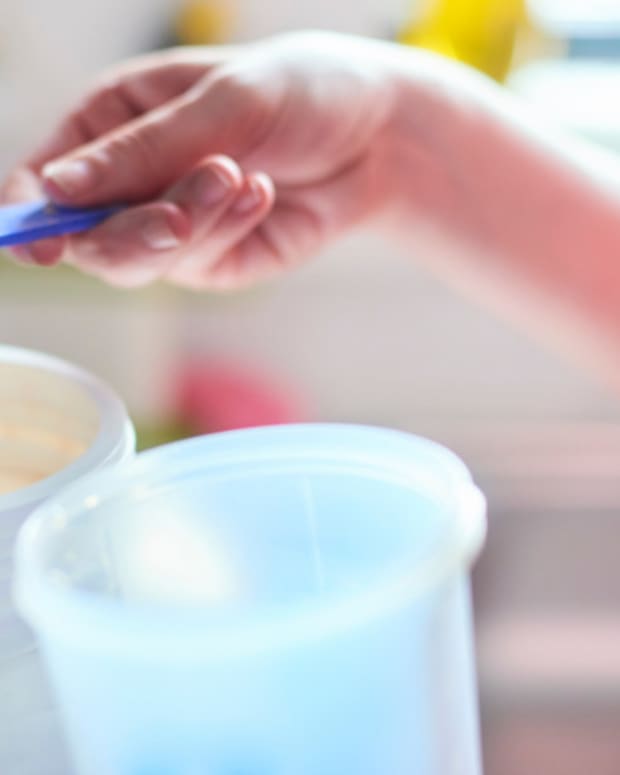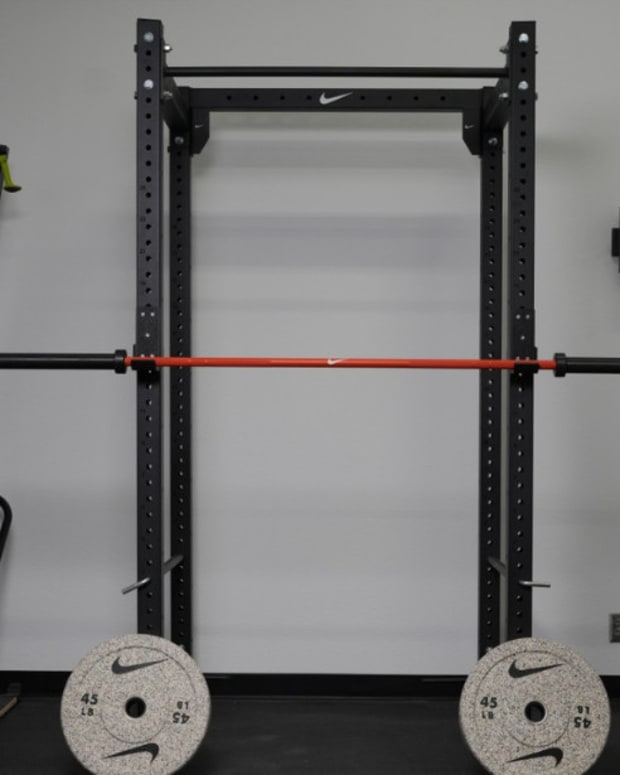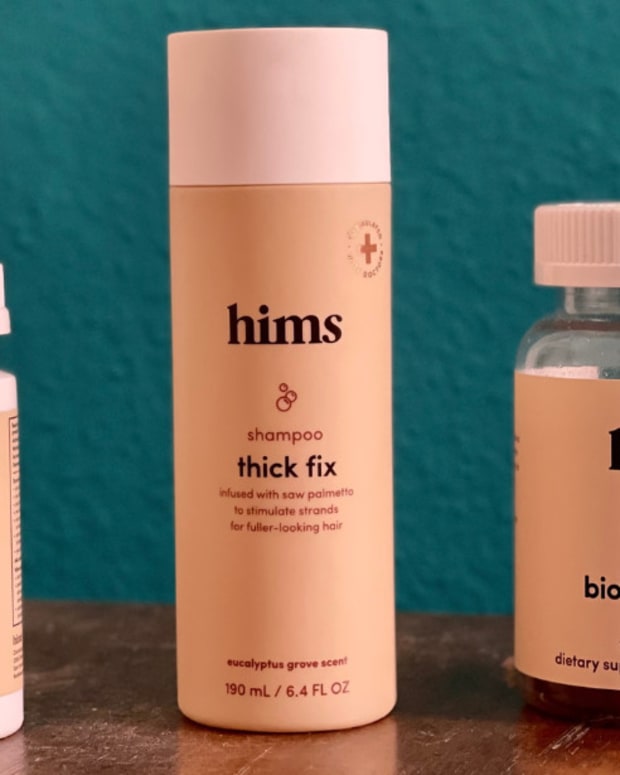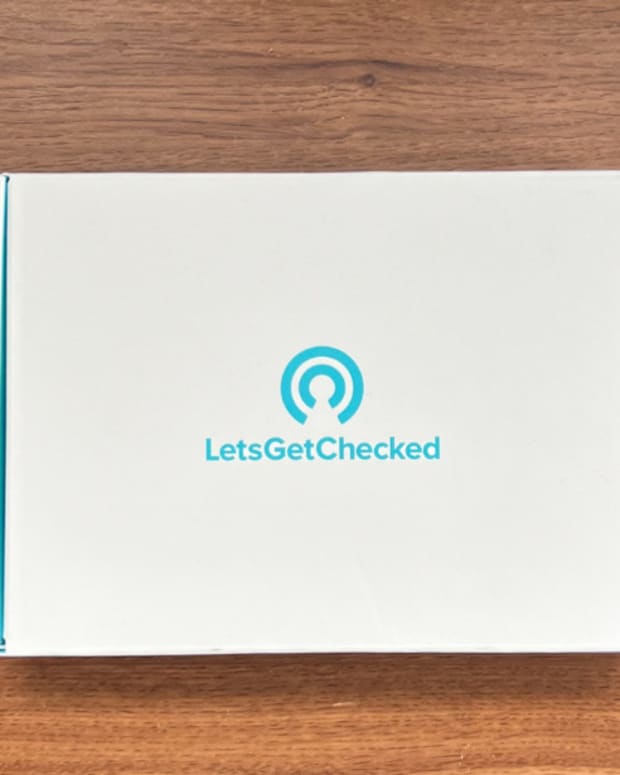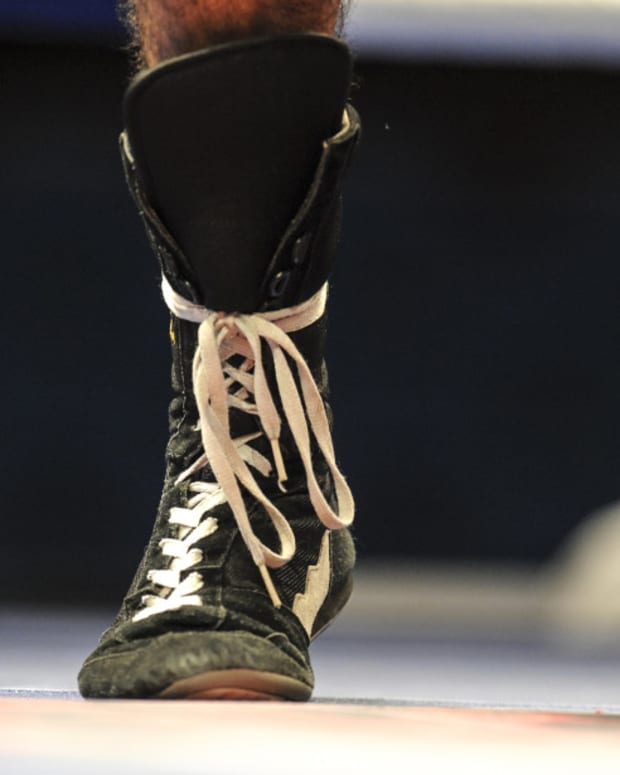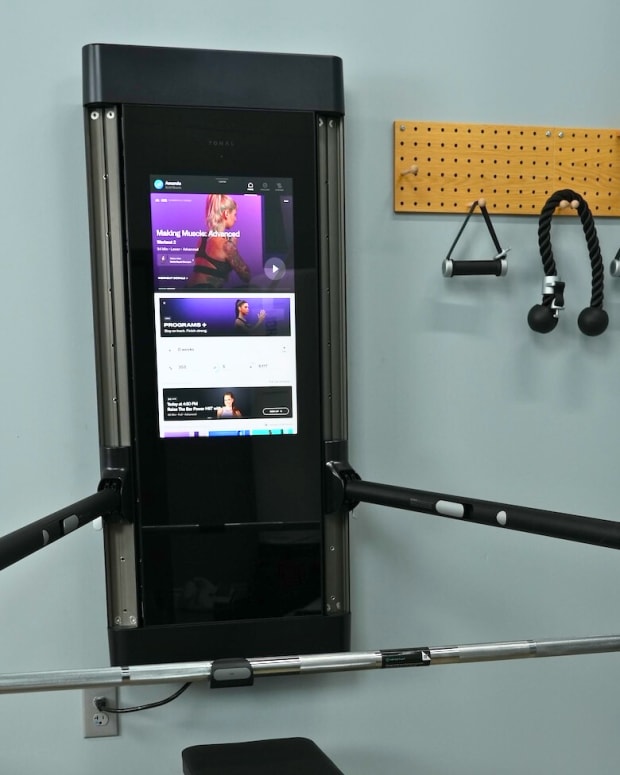The products featured in this article have been independently reviewed. When you buy something through the retail links on this page, we may earn commission at no cost to you, the reader. Sports Illustrated editorial staff are not involved in the creation of this content. Learn more here.
Post-workout recovery is one of the most important and most often forgotten elements of a workout routine. During an intense training session, muscles become fatigued, your body burns calories and you lose fluids while sweating which leaves you dehydrated. Although a recovery routine is the last thing you want to do after a workout, without proper rest and recovery your body can suffer from overtraining syndrome. This can cause even more fatigue, depressed mood, inflammation and persistent sore muscles according to research published in Sports Health. Whether you are an elite athlete or someone just trying to add more fitness to your regimen, it is essential to develop a post-workout recovery routine to help regain energy and nourish your body for the following training sessions.
As a college athlete, I complete high-intensity, cardio, weightlifting and resistance workouts regularly as a part of my training sessions. I quickly learned that post-workout recovery is equally as important as my training to be able to perform well. I have become a frequent visitor to my school’s athletic training room, where you can find me taking an ice bath, getting a massage and refueling in our nutrition center. Even if you don’t have access to a state-of-the-art training facility, there are easy steps that you can take to help your body recover efficiently.
The best muscle recovery routines will vary depending on each individual’s specific needs, but basic elements include replenishing fluids, eating a balanced meal, massages and stretching for a few minutes when you finish an exercise. With the help of University of Maryland Certified Strength and Conditioning Coach Lauren Kelly, we’ve compiled a list of the best post-workout recovery tips so you can develop a recovery routine that leaves you feeling well-rested, nourished and energized for future workouts.
This content is meant to be informative, but should not be taken as medical advice. It is not intended for use as diagnosis, prevention or treatment of health problems. Always speak with your doctor before starting any new supplement or exercise regimen.
Benefits of Post-Workout Recovery
After a tough workout, you will likely experience muscle soreness and fatigue because of the strain placed on your body while exercising. This soreness may be due to lactic acid build-up, blood-flow imbalance, nerve fatigue or the small tearing of your muscle fibers during repetitive muscle contractions.
Post-workout recovery is necessary to nourish and rejuvenate your muscles so that they can repair and grow from the damage that occurred during a workout.
“Every time you work out, there is some form of breakdown in muscle tissue or trauma that happened to your body. The recovery process helps signal your body that it’s over and it’s time to start the repair," says Lauren Kelly, C.S.C.S.
Apart from muscle soreness, your body is also depleted of essential nutrients and water after strenuous workouts. When you sweat, your body loses the energy, electrolytes and water it stores to keep your body functioning. Another essential element of post-workout recovery is to replenish these nutrients by refueling.
Without recovering, your body will not be able to perform at the same performance level in subsequent workouts. For instance, research has found sleep deprivation can lead to decreased aerobic endurance and limit muscle repair. Similarly, overtraining, going too many days with an off-day or proper recovery, can cause extreme dehydration and fatigue.
Recovery will vary by individual, but it often includes, refueling, resting, ice baths and many other options. The bottom line? In order to see results, such as muscle growth or improved fitness, your body needs to take time to repair itself between workouts.
This content is meant to be informative, but should not be taken as medical advice. It is not intended for use as diagnosis, prevention or treatment of health problems. Before starting any new supplement, weight loss or exercise regimen, talk with your doctor.
13 Post-Workout Recovery Tips
1. Cool down
While warming up is all about preparing your body for a hard workout, cooling down, an often-forgotten component of recovery, is all about preparing your body to recover so you can go again the next day. Five to 10 minutes of easy movement (a slow jog, walk, swim, etc.) following a workout begins the gradual recovery process by allowing your heart rate and blood pressure to lower to their normal, pre-exercise levels, according to the Mayo Clinic.
“A cooldown is kind of synonymous with recovery because it signals your body that you’re done,” Kelly says. “You definitely want to have some slow transition before you immediately stop exercising. Whether that be a cooldown—like a slow jog, run, walk or stretching—or even just resting for a minute letting your heart rate come down and not just getting done with a workout and going straight to your car and driving.”
Instead of slamming on the brakes immediately after a workout, try walking for a few minutes to slowly let your heart and blood vessels recover from the stress of the training session. While continuing to move is probably the last thing you want to do after a hard workout, your heart and blood vessels will thank you.
2. Drink water
When it comes to muscle recovery, nothing beats rehydrating with water. The human body needs water to survive and function, and your body loses large amounts of water during workouts, especially in hot or humid environments where you are sweating more. Although there are tons of hydrating sports drinks on the market, simply consuming water with solid food will do the trick, as the water hydrates and the food replenishes lost electrolytes, according to research published in the Journal of Sports Science.
The amount of water needed to rehydrate post-workout will vary from person to person depending on the amount you sweat and the length of the workout. If you want to know how much water to consume post-workout, try weighing yourself before and after the workout—every two pounds lost equals approximately one liter of water lost. While everyone’s needs are different, research suggests that drinking around one and a half times the amount of water lost during exercise for two to six hours after exercise is a good estimate of the amount of water needed to rehydrate.
3. Take electrolytes
Electrolytes are elements that help maintain fluid balance, conduct electrical charges to help muscles contract, regulate chemical reactions and many other essential body functions. We get electrolytes from the food and beverages we consume. If you don’t have easy access to food after your workout, you’ll need to add an electrolyte drink or supplement (in addition to water) to replenish your electrolytes. Sodium is the primary electrolyte lost through sweat during workouts, so the electrolyte drink must contain moderately high levels of sodium (approximately one gram of sodium per hour of exercise when there is heavy sweat loss) to be effective in rehydration. Other important electrolytes include potassium, magnesium, calcium, chloride and phosphate.
“Electrolytes are beneficial because they help with muscle contractions. Sodium and potassium are definitely important, but also the amount of electrolytes that you have is very dependent on you. You may notice it after you're done with a workout if you have like a black T-shirt on or something and there's a white ring around your neck, that's all the salt that you just excreted through your skin. So you're a salty sweater,” Kelly says.
If you’ve experienced what Kelly describes, you will probably need more electrolytes than the average person. Try looking for a salt ring as Kelly suggests or pay attention to the amount you sweat to have a better idea of the amount of electrolytes you need to replenish.
4. Eat a high-protein snack or take a protein supplement
If you want to see muscle growth from your workouts, consuming protein immediately after a strenuous workout is essential. Research shows that protein helps stimulate protein synthesis, or the creation of new muscle protein in the body. The newly created muscle proteins are used to build muscle mass in the body and repair the trauma your muscles suffered during your training session.
“If you did a strenuous workout, protein helps rebuild muscle tears and then also create new junctions. It is highly accepted in this area that a high protein diet or protein in general, is the key to maintaining or building muscle mass," Kelly says.
The best time to take protein is within two hours of a workout, but it can also be helpful to drink a protein shake before bed for additional muscle support. Studies show that 20 grams of protein is a sufficient serving to see results after a workout. You can incorporate protein into your diet in several ways, but in my experience, one of the easiest and fastest ways to get protein in after a workout is through protein powder or a protein shake. There is a range of protein powders on the market, including hemp, casein and plant-based protein powder, which makes it easy to find a product that fits your preferences and fitness goals. However, research suggests that whey protein is the most effective type of protein for stimulating muscle growth, so we recommend picking a whey-based protein supplement if you are looking to gain muscle mass.
5. Eat carbohydrates
“Carbohydrates are the fuel source for your body,” Kelly says.
While eating carbohydrates before a workout is important to fuel your body, it is equally important to replenish what you burned by eating carbohydrates after training. Your body stores the carbohydrates you ingest as energy (glycogen) in your muscles to help power through a workout and repair tired and fatigued muscles during recovery.
No matter your fitness goals, it is important to eat a carb-filled snack after your training session. The recommended amount of carbohydrates varies based on the intensity of your workout and body weight. However, studies show that eating a high-carbohydrate diet for 24 hours after a workout will restore over 90 percent of your muscle glycogen. Your body can then use this newly stored glycogen to perform in your next training session. Don’t get so focused on carbs that you forget to eat protein too. Research suggests eating a mix of carbs and protein within an hour of finishing a workout will kickstart your recovery.
6. Eat a balanced meal
A few hours after you’ve had your post-workout protein and carbs, it is important to eat a balanced meal to continue the recovery process and nourish your body. A balanced meal typically includes fruits and vegetables, a grain and protein. Make half of your plate fruits and vegetables, a quarter whole grains and a quarter healthy protein, according to Harvard’s Nutrition Source.
When deciding what to eat it’s also important to consider your personal fitness goals. Kelly says that everyone’s plate will look different, depending on their specific training plans.
“Do you want to build, maintain or lose [muscle]? That's also going to adjust what you want to [eat]. If you want to maintain muscle mass, but lose a little bit of fat mass, then you need to have more protein. If you want to maintain your weight, then you're probably going to follow the recommended guideline. If you want to lose, like lose total weight, then you're going to have to decrease just about everything," she says.
If you’re unsure of what a balanced meal looks like for you, talk to your primary care physician.
7. Replenish vitamins and minerals
Vitamins and minerals are natural micronutrients that are essential to perform many bodily functions. We get them from our food, but chances are not all of us have a perfect diet and may be missing some minerals. A multivitamin can help fill in the gaps, but sometimes individuals need more specific supplements to target a certain vitamin or mineral deficiency.
An iron deficiency is the most common nutritional deficiency worldwide. Iron plays a crucial role in blood health because it is a significant component of hemoglobin. According to Harvard’s Nutrition Source, the most common symptom of iron deficiency is extreme fatigue because your body lacks enough red blood cells to transport oxygen throughout the body. Kelly says that calcium is another common deficiency, and it has an important role in bone health, muscle contractions and nerve function. A shortage of calcium can lead to bone injuries and muscle cramps during a workout.
If you are deficient in calcium, iron or another specific vitamin or mineral, it can have a devastating impact on your performance. Luckily, there are supplements that can help replenish your lack of nutrients. If you suspect that you are lacking specific vitamins and minerals we recommend consulting a medical professional to ask about which supplements you should incorporate into your routine.
“You would definitely need to consult with a medical professional, maybe about other vitamins that you should take, especially if you have a calcium deficiency or iron deficiency. They might suggest different vitamins that will probably also help with your recovery," Kelly said.
Related Post: The Best Workout Recovery Supplements
8. Go to sleep early
Quality sleep is crucial to keep your body functioning properly, but it’s even more important to get enough sleep after an intense workout to help your body recover.
“Sleep is actually where the biggest part of recovery happens. Your body is in a fully parasympathetic state, and it can actually recover from that point," said Kelly.
Your body uses sleep to rest and repair itself to continue working the next day. While your body is in a parasympathetic state, blood circulation increases, which also increases the flow of oxygen and nutrients to your muscles. Growth hormones that help repair muscle damage and grow muscle tissue are also released. These are two of many examples of recovery-promoting body processes that occur during sleep.
The consequences of sleep deprivation can have staggering effects on your performance and recovery process. The average adult needs seven to nine hours of sleep every night. Sleeping under the essential amount can cause fatigue, headaches and slowed reflexes—all of which could detrimentally affect future training sessions.
If you have trouble sleeping, changing your sleep habits or taking a sleep supplement can help improve your sleep quality. Easy ways to improve your sleep hygiene include staying away from blue light (the light emitted by electronics like your phone or TV) before bed, keeping a sleep schedule and developing a consistent bedtime routine. Sleep supplements like melatonin and magnesium can also help improve your sleep quality and help you fall asleep faster.
“You can do the best workout in the world and have the best nutrition, but if you don’t have great sleep, then you’re definitely missing a whole piece of the puzzle and you’re not getting the most benefits,” said Kelly.
9. Get a massage
Delayed onset muscle soreness is not only painful, but it can interfere with everyday life. I know that I am often still struggling to walk days after a heavy squat workout. One of my favorite—and most relaxing—ways to prevent this soreness is by getting a massage. Studies show just a 10-minute massage after a workout can decrease delayed onset muscle soreness by over 30 percent. The pressure and movement from a massage increase blood circulation, which can decrease muscle stiffness and inflammation. And, if you have back-to-back workouts, it helps your muscles recover faster so that you can be ready to go in no time.
A cheap and easy alternative to getting a massage is investing in a foam roller. Foam rolling is a self-myofascial release (SMR); a self-massaging technique that helps relieve muscle tightness and soreness. You can use a foam roller to target particularly tight and sore muscles to reduce muscle inflammation and increase blood circulation to ease pain and aid in muscle recovery.
10. Stretch
While stretching may be one of the most well-known recovery methods, it is important to do it the right way and at the right times to see results. It can help improve flexibility and your joint’s range of motion. A common misconception about stretching is that it should be done before a workout, as part of the warm-up. However, to see the best results, it is best to stretch after a workout when your muscles are already warm.
Additionally, stretching cold muscles could actually lead to injuries and harm your performance by weakening muscles. The Mayo Clinic advises individuals to be careful when stretching injured muscles because strained muscles can be further harmed if stretched incorrectly. When done correctly, stretching can help prevent injuries and improve future performance by increasing your mobility and flexibility.
11. Take an ice bath
Personally, I have never been a fan of taking an ice bath, but the benefits of the freezing water after an intense exercise motivate me to take them multiple times a week during a hard training cycle. Ice baths can help ease sore muscles and reduce inflammation by constricting your blood vessels and reduce your body temperature to help you cool down after a workout.
If you want to take an ice bath, you can use a cold plunge tub or an ice barrel, or you can create your own ice bath at home with a bathtub and bag of ice. Whichever way you decide to use cold water immersion therapy, the water should be no colder than 53 degrees Fahrenheit and you should stay immersed for five to 10 minutes for optimal results.
Although there is little evidence that ice baths increase muscle performance in subsequent workouts, the evidence of its effectiveness in decreasing muscle soreness makes it far worth it. Plus, if you build your own ice bath at home, it is a cheap way to ease soreness.
12. Go to the sauna
The other side of temperature therapy is heat therapy, and one of the easiest and most common ways is the sauna. Complete heat immersion is an effective way to expedite neuromuscular recovery, especially after endurance workouts. Studies show that infrared saunas in particular can decrease muscle soreness because infrared heat can penetrate deeper into fat tissue and the neuromuscular system. By visiting a sauna for a few minutes prior to training, you can decrease exercise-induced muscle damage and delayed onset muscle soreness by effectively warming up the muscles before a strenuous exercise. If you choose to use a sauna, experts recommend keeping heat therapy sessions under 30 minutes to avoid putting too much stress on your body.
If you can't decide which temperature therapy to use, consider contrast therapy, which alternates between hot and cold baths to promote muscle recovery. Contrast therapy has been shown to increase the blood flow to and oxygenation of muscle tissue.
13. Use compression garments
Compression garments can include anything from tights and compression socks to a compression wrap. Compression increases blood flow, bringing more nutrients and oxygen to your muscles. This can help decrease muscle soreness, especially after endurance training. Leg compression machines are a popular method of compression therapy, and I regularly use Hyperice Normtec 3 Legs to recover from running workouts. Compression garments can also help decrease muscle swelling that often occurs from long travel days or sitting at a desk all day.
Kelly also uses compression garments as a part of her recovery routine.
"Compression garments just feel better, especially on my lower limbs,” she says. “When I put them on, it feels tight, so if I have a little bit of swelling in my legs due to a hard workout, it's compressed and it's able to push through and let the blood flow a little bit better."
Our Favorite Products for Post-Workout Recovery
Best protein powder
XWerks Grow
XWerks Grow is a whey protein isolate sourced from naturally raised and 100 percent grass-fed cows so that there are no added hormones, antibiotics or pesticides passed on to the protein powder. The brand boasts that Grow assists in muscle repair and muscle growth and strengthens your immune system. The formula is made using whey protein isolate, meaning it is a higher-quality whey and includes more protein. Each serving includes 25 grams of protein—five grams over the recommended post-workout amount. XWerks Grow is available in four classic flavors: chocolate, vanilla, peanut butter and strawberry.
Transparent Labs 100% Grass-Fed Whey Protein Isolate
Transparent Labs Whey Protein Isolate is a great protein powder option sourced from 100 percent grass-fed cows. The brand’s formula contains no artificial coloring, sweeteners or preservatives and is completely gluten-free and non-GMO. Transparent Labs created this protein powder to support recovery and stimulate muscle growth, so you can see the best results out of every workout. Each serving has 28 grams of protein and only one gram of carbohydrates.
Legion Athletics Plant+ Vegan Protein Powder
If you’re looking for a plant-based protein option, Legion Athletics just released its Plant+ Vegan Protein Powder which is rich in nine essential amino acids that promote muscle recovery and growth. The powder is made from a mix of pea and rice protein and is vegan-friendly. It also contains no artificial flavors, sweeteners, food dyes or preservatives. Legion Athletics tests its protein formula in a lab for purity to ensure the quality of every batch. The Plant+ Vegan Protein Powder has a “No Return Necessary” money-back guarantee, promising a full refund without a hassle if you are not satisfied with your purchase.
Best multivitamin
Ritual Essential Multivitamin
Ritual offers clinical-backed multivitamins with unique formulas for both men and women. The Ritual Essential for Women Multivitamin 18+ and Essential for Men Multivitamin 18+ are designed for individuals between the ages of 18 to 49. Each vitamin contains nine traceable ingredients, including iron and magnesium and is encased in a delayed-release capsule for maximum absorption. The vitamins also feature a mint tab, so you can take your vitamins without a bad taste lingering in your mouth.
If you're interested in this brand, check out our Ritual review for more information.
Transparent Labs Multivitamin
Like all Transparent Labs products, its multivitamin has no artificial sweeteners, colors or preservatives. The multivitamin’s potent formula works for both men and women and it has high doses of many key micronutrients, including three types of Vitamin D. However, it excludes iron, which makes it easier on the stomach, but not ideal for individuals with an iron deficiency. This multivitamin also includes Transparent Labs’ patented KSM-66 organic ashwagandha root extract for increased energy and better overall health.
Check out our in-depth Transparent Labs multivitamin review for more information.
AG1
AG1 is not your typical multivitamin. It is a green powder filled with 75 key vitamins, minerals and whole-food sourced nutrients. This comprehensive formula is designed to both fill dietary gaps and support overall health. It also includes prebiotics and probiotics to support gut health and enhance nutrient absorption. AG1’s plant-based powder is a great multivitamin alternative for individuals who struggle to take a pill.
Best electrolyte drink
Transparent Labs Hydrate
Unlike many sports drinks, Transparent Labs Hydrate is not filled with artificial sweeteners, sugars or colors. Its formula has minerals that will replenish necessary electrolytes to keep you at peak performance levels. Hydrate includes 500 milligrams of sodium and 1,000 milligrams of taurine among other minerals that help balance bodily fluids and sustain muscle contractability. It is also sweetened with stevia for healthy and natural flavoring.
Bubs Naturals Hydrate or Die
Hydrate or Die is an electrolyte powder designed for quick recovery and hydration. Bubs’ naturally-sourced ingredients include a coconut water base, Himalayan salt for sodium and chloride and magnesium sourced from ocean plankton. The formula is 100 percent National Science Foundation for Sport Certified, so it is safe for collegiate and competitive athletes to use. Bubs Hydrate or Die is conveniently packaged in individual-serving packs, making it easy to get the right serving quickly and on the go.
Gainful Personalized Hydration
Personalized Hydration by Gainful is made to accommodate your specific needs, depending on your workout frequency, intensity and sweat levels. Its electrolyte formula continues four types of electrolytes mixed with cane sugar for faster hydration with a great taste. Gainful’s personalized hydration is Non-GMO, 100 percent plant-based and available in three great-tasting flavors. There is also a caffeinated option that contains 150 milligrams of caffeine so you can rehydrate and reenergize all with one single-serving package.
Best sleep supplement
Xwerks Ashwa
XWerks Ashwa gummies contain ashwagandha, which has been used as herbal medicine for over 5,000 years. Studies show that ashwagandha root extract can improve sleep quality in adults and individuals with insomnia. It can also increase testosterone and decrease stress and cortisol levels. XWerks Ashwa contains 1,500 milligrams of ashwagandha, six grams of sugar and five milligrams of sodium. The added sugar and gummy texture make it easy to consume, even if you don’t take pills easily.
Kaged Sleep SR
Kaged boasts that its Sleep SR supplement will help you fall asleep faster and stay asleep longer. Reviewers echo Kaged’s statement with one saying, “the best sleep I’ve gotten with a sleep aid.” It works by boosting your natural melatonin levels through tryptophan, B vitamins and additional melatonin. Kaged’s slow-release MicroActive melatonin continues to release for up to seven hours to give you a full, high-quality night’s sleep. It is also designed to promote calmness and reduce stress to help you easily fall asleep.
Transparent Labs ZMO
While melatonin is the most commonly used supplement for sleep, magnesium and zinc have also been shown to improve sleep quality. Transparent Labs ZMO sleep aid contains 144 milligrams of magnesium and 10 milligrams of zinc with an oyster meat powder base. Magnesium can also reduce the symptoms of restless leg syndrome, which often interferes with sleep quality.
Best cold plunge tub
Plunge
Plunge’s Cold Plunge is one the best cold plunges on the market that can be installed inside or outside, so you can take an ice bath wherever you like. This cold plunge tub can cool water down to 39 degrees Fahrenheit and has circular filtration and Ozone sanitation for cleaner and better-quality water. The 20-micron filter picks up loose hair and other debris, so it will not continue to circulate in the water. The durable design is completely insulated for better temperature regulation and plugs into the wall with no plumbing required.
Post-Workout Recovery FAQs
What’s the best thing to do after a workout?
After a workout, eating a snack and drinking water is the best thing you can do. It refuels your body so that it can continue to perform necessary bodily functions and kickstart muscle recovery. The other important practice is to get a good night of sleep so that your body can recover in a parasympathetic state and rest from a hard day.
What helps muscles recover faster?
Massages, compression garments and sitting in a sauna for a few minutes are all effective ways to help your muscles recover faster. Additionally, eating a balanced meal with healthy protein and carbohydrates helps stimulate muscle growth and repair the tears that occurred during challenging exercises.
Is heat or ice better after a workout?
I prefer heat before a workout to effectively warm up my muscles and ice after a workout to ease muscle soreness. However, both ice and heat are effective treatments for muscle soreness, so you can choose whichever one makes your muscles feel better.
What happens if you shower immediately after a workout?
Apart from simply washing away the sweat and dirt from a long workout, cold showers, like cold immersion therapy, can help muscle recovery by lowering your core body temperature and decreasing your heart rate. The cooler temperature can also lower cardiac stress.
Final Thoughts
No matter your fitness goals, post-workout recovery is essential to reaching them. Our bodies are not designed to continue to push the limits without rest days and proper recovery methods. When you finish a workout, remember to refuel, rehydrate and take extra steps like a massage, ice bath or compression garments to ease muscle soreness and help repair torn muscle tissue. Trust me, your body will thank you and your performance will show the benefits.
Prices are accurate and items in stock as of publish time.



